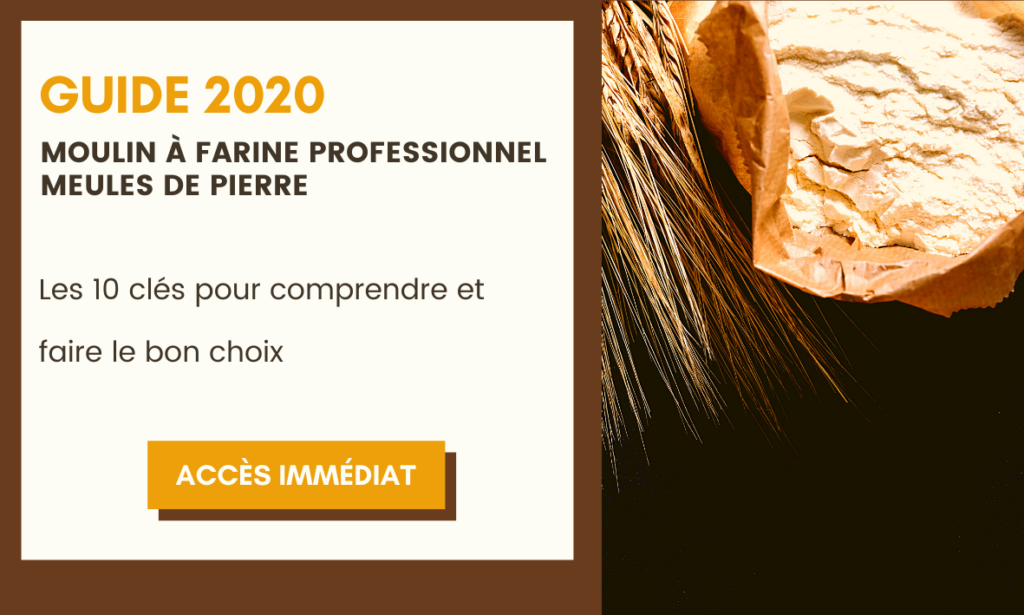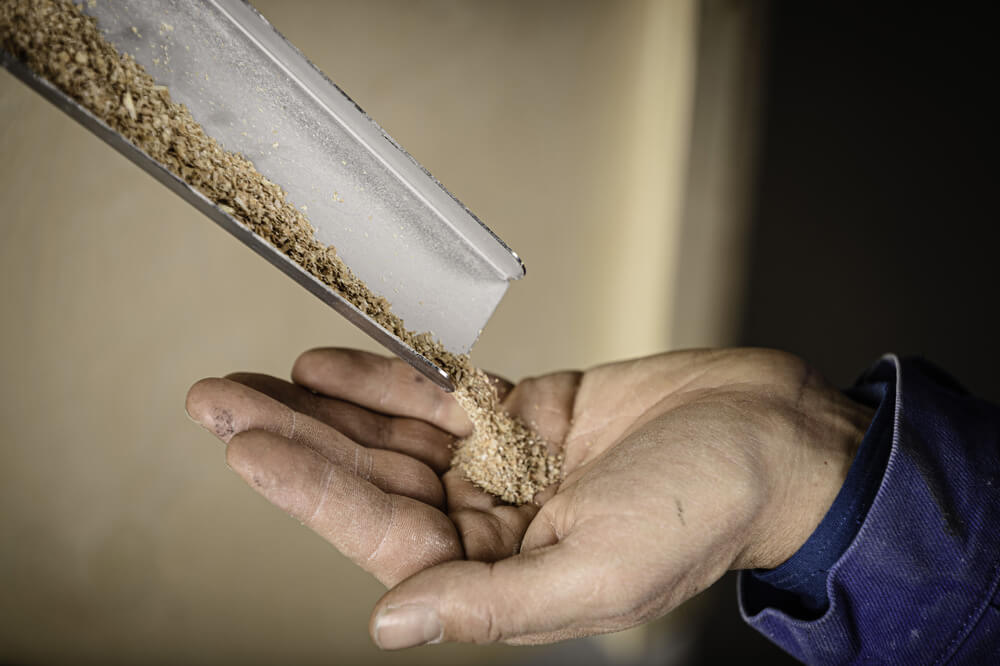Astrié-type mills offer a lot of promise. Promises that are close to the hearts of bakers, bakery farmers and cereal growers who want to offer their consumers better, more nutritious, more complete products. Thanks to the Astrié mill, breads, biscuits and brioches can recover their flavours of yesteryear, thanks to rediscovered know-how and techniques that cherish the seeds to preserve every benefit. So how does the Astrié mill propose to put health back at the heart of bakery treats?
To make good bread, you need the right ingredients
Any self-respecting baker knows that to make good bread, you need good ingredients, especially good flour. But finding quality flour that’s nutritious and easy to digest isn’t as easy as it seems.

So many bakers have decided to produce their own flour.
Unfortunately, however, not all mills produce quality ingredients. Often, the grain is stripped of its bran, and the flour loses all its nutritional properties. The baker is left with a white flour that has little (if any) nutritional value.
Grinding at the heart of a good product
The secret of the Astrié mill lies in the way it processes the grain. Instead of being crushed, the grain is rolled between the millstones. And how is this achieved? By micrometrically adjusting the distance between the two millstones. It’s this precision that allows you to obtain a genuine local flour that’s good for your health.

And there’s one detail that counts more than anything else in achieving a good grind. It is essential to use a sufficiently robust stone to cut these millstones: Sidobre granite. This is the key to successfully unrolling the grain without crushing it. Rye flour, durum wheat flour, soft wheat flour, wheat flour, maize flour, spelt flour, buckwheat flour, chestnut flour: properly cut, the Astrié type millstones allow you to unroll any grain you wish, provided it is sufficiently dry.
What type of flour does an Astrié mill produce?
Non-oxidised flour
The flour obtained from an Astrié type mill is non-oxidised, as it is obtained in a single pass between the two millstones.
Some stone or cylinder mills are obliged to pass the flour several times between the millstones: as a result, the flour is oxidised and its quality is reduced.
Flour that retains its bran
Flour is classified according to its ash content, i.e. the amount of mineral matter in its composition.
As a result, the less wheat kernel husks a flour contains, the lower the ash content, and vice versa.
The flour produced by the Astrié type mill retains the bran of the grain. By unrolling the bran rather than crushing it, you can create more complete flours, such as :
- T80 flour, thanks to the 300 sieve supplied with the complete mill
- T110 flour, with an additional 470µ sieve
- T130 equivalent flour, with an additional 600µ sieve
More nutritious flour
By definition, the more a flour is wholemeal, the more nourishing it is and the richer it is in fibre, minerals and vitamins.

By producing T80, T110 and T130 flours, the Astrié type mill preserves the nutrients present in the wheat germ. This is because the germ is not separated from the kernel, as it is in cylinder milling, but is completely mixed with it as the millstone rotates.
And we know: the germ of the wheat kernel is the reservoir of vitamins and minerals. By preserving its presence in flour, you enrich it with vitamins B1, B2, B3, B5, B6 and B9, phosphorus, zinc, magnesium, manganese, iron, potassium, copper, fibre and protein.
In short, you’re producing a flour that gives consumers a lot, that actively works for their health. Say goodbye to white flour, which offers no nutrients, and hello to nutritious flour. This type of flour, with no deficiencies, is the very basis of a healthy, nutritious diet.




